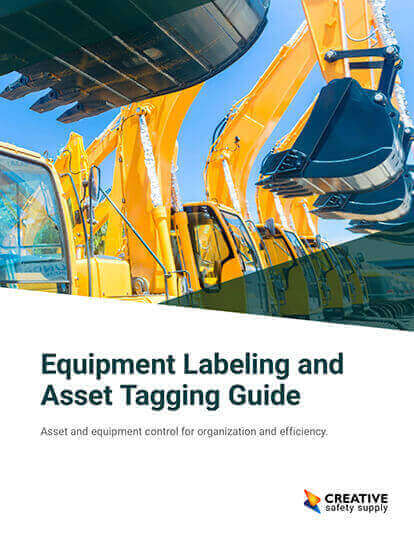
Labeling equipment well can help contribute towards an organized and safe workplace, creating a visual form of communication which maximizes efficiency and alerts employees of any hazards. Although there are many benefits to be had, there have been examples of businesses making these common mistakes…
Poor placement
The labels should be placed on equipment in a position which is going to be seen instantly. They should be securely attached in an area which is clear of any moving parts or friction, preventing them from being damaged, illegible, or peeling off.
Excessive information
Equipment labels need to be clear and concise, only including important information such as the serial number, purchase date, and key handling and safety instructions. By overcomplicating the labels with too much detail, it will become difficult for employees to find the details they need and possibly even deter them from reading the label at all. If further information is needed, use a QR code or provide instruction on where to locate additional detail.
Unsuitable material
Durable materials will be needed to ensure the labels can withstand their surroundings. Depending on the nature of the business, certain labels may be exposed to moisture, extreme temperatures, or chemicals which can quickly result in unreadable labels. By opting for high-quality equipment labels, they can last the duration of the equipment’s lifespan and prevent issues such as fading or peeling.
Inconsistency
Clear labeling guidelines should be established within the business to standardize the appearance of all equipment. By using consistent fonts, colors, layouts, and language, employees can get used to the format and quickly know where to look. If consistency is not maintained, it can increase the likelihood of errors or accidents from misunderstandings.
Not considering language barriers
For businesses who have a multicultural workplace or are involved in global operations, languages must be considered to ensure communication can be maintained among all employees involved. Whether multiple languages are printed or universal symbols are used, consideration needs to be made to prevent error from a lack of communication.
Not updating
For equipment that requires periodic maintenance, the labeling should reflect the last maintenance date and the next scheduled date. As the equipment undergoes maintenance, repairs, or replacements, the labeling can quickly become outdated so they must be updated to provide accurate information. Without this, it can provide false guidance or be easy for employees to unknowingly use equipment without an up to date maintenance check, causing safety hazards.
Lack of accessibility
Labels should utilize braille or audio cues when necessary to ensure that everyone in the workforce can access information about the equipment. Failing to provide accessible labels that can be used by employees with visual or hearing impairments is not only displaying a lack of responsibility as a business, but it could also fail to comply with legal requirements.
Poor visual cues
Across the industry, there are various standardized color codes and symbols which can be instantly recognized. Whether they show the category of equipment or hazard warnings, these cues convey critical information quickly so using the incorrect system can cause significant miscommunications in emergency situations.
Similar How-To's
- How to Effectively Label Equipment
- How to Use GHS Labels
- How to Avoid Ergonomic Hazards
- How to Avoid Physical Hazards
- How to Use a LabelTac Industrial Label Printer
- How to Implement Pipe Markings
- How to Avoid Shock Hazards
- How to Avoid Health Hazards
- How to Encourage PPE Use
